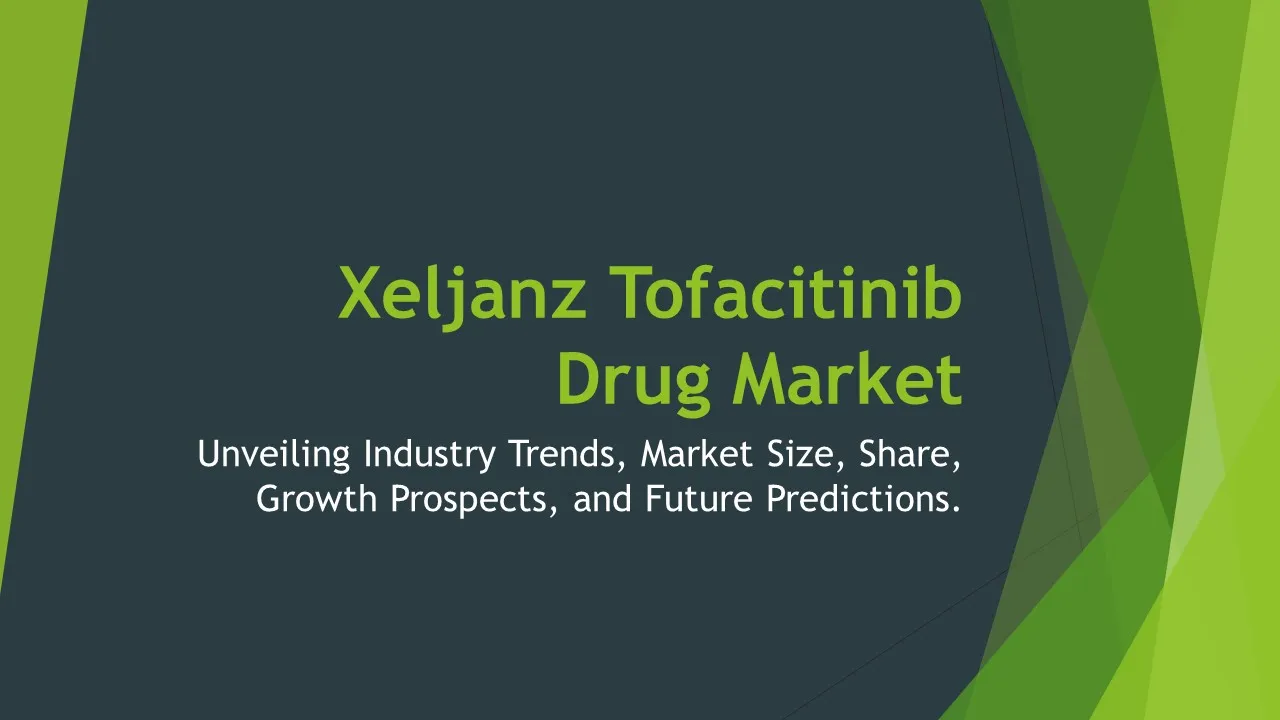Human Albumin
Human Albumin Market Segments - by Product Type (Human Serum Albumin, Recombinant Albumin), Application (Therapeutics, Drug Formulation, Vaccines, Cell Culture Media, Research, Cosmetics), Distribution Channel (Hospitals, Clinics, Online Pharmacies, Retail Pharmacies), Region (North America, Europe, Asia Pacific, Latin America, Middle East & Africa) - Global Industry Analysis, Growth, Share, Size, Trends, and Forecast 2025-2035
- Report Preview
- Table Of Content
- Segments
- Methodology
Human Albumin Market Outlook
The global human albumin market is projected to reach approximately USD 8.7 billion by 2035, growing at a compound annual growth rate (CAGR) of around 9.2% during the forecast period from 2025 to 2035. This growth is driven by the increasing demand for human albumin in therapeutic applications, rising incidence of liver diseases, and the expanding pharmaceutical sector that utilizes high-quality proteins for drug formulation and vaccine development. Additionally, the growth of the healthcare infrastructure, especially in emerging economies, and the increasing prevalence of chronic diseases are expected to further propel the market. Innovations in recombinant technology are also enhancing the availability of high-purity human albumin, which is crucial for various medical applications, including critical care and blood volume management. Consequently, these factors are collectively contributing to the robust expansion of the human albumin market.
Growth Factor of the Market
The human albumin market is influenced by several key growth factors. First and foremost, the rising prevalence of liver and kidney disorders necessitates the use of albumin in treatment protocols, driving demand. Furthermore, an increase in surgical procedures worldwide has resulted in a higher requirement for blood volume expanders, where human albumin plays a crucial role. Additionally, the growing pharmaceutical industry, particularly involving biologics and vaccines, is reinforcing the need for high-quality albumin solutions during drug formulation processes. The increasing number of clinical trials aimed at exploring new therapeutic uses for human albumin also contributes significantly to market growth. Lastly, the international regulatory landscape is becoming more supportive of the use of human albumin, thereby facilitating its adoption across various medical applications.
Key Highlights of the Market
- The global human albumin market is expected to reach USD 8.7 billion by 2035.
- North America holds a significant market share, driven by advanced healthcare facilities.
- Human serum albumin remains the leading product type, accounting for a major share of the market.
- The therapeutics application segment is anticipated to show the highest growth rate due to rising chronic diseases.
- Recombinant albumin is gaining traction due to its safety profile and lower risk of transmission of infectious agents.
By Product Type
Human Serum Albumin:
Human serum albumin (HSA) is the most widely used form of albumin in clinical settings and holds the largest market share within the human albumin segment. It is primarily derived from human plasma and is utilized in various therapeutic applications, including treatment for burns, liver cirrhosis, and shock. The purity and efficacy of HSA make it a vital component in blood volume replacement therapies and post-surgical recovery protocols. The demand for HSA is expected to rise, driven by its essential role in managing critical care patients and its established safety profile over decades of use. Moreover, regulatory approvals and guidelines from health organizations further bolster its usage, ensuring a steady demand from hospitals and healthcare providers worldwide.
Recombinant Albumin:
Recombinant albumin is emerging as a significant alternative to human serum albumin, particularly due to its consistent quality and reduced risk of transmitting infectious agents. Produced through recombinant DNA technology, this form of albumin is increasingly being utilized in therapeutic and research applications. The advantages of recombinant albumin include its high purity, long shelf life, and the ability to be produced in larger quantities, contributing to lower costs and increased accessibility. It serves essential roles in drug formulation, cell culture media, and vaccine production. As the pharmaceutical and biotechnology sectors expand, the market for recombinant albumin is expected to grow, driven by innovations in biopharmaceutical manufacturing processes and the ongoing quest for safer, more effective therapeutic options.
By Application
Therapeutics:
The therapeutic application of human albumin is the most significant segment of the market, encompassing a wide array of medical treatments. Albumin is crucial in managing conditions such as hypoalbuminemia, liver disorders, and as a volume expander in critical care scenarios. Its role in ensuring oncotic pressure and fluid balance makes it indispensable in various medical settings, including surgical, trauma, and burn units. With the increasing prevalence of chronic diseases and the growing elderly population, the demand for albumin in therapeutic applications is anticipated to rise significantly, as healthcare providers look to utilize its properties for effective patient care and recovery.
Drug Formulation:
The drug formulation segment is witnessing robust growth as pharmaceutical companies increasingly integrate human albumin into their products, particularly biologics and vaccines. Its stabilizing properties are essential for enhancing the solubility and bioavailability of therapeutic proteins, thereby improving the efficacy of drug formulations. Human albumin acts as a carrier for various drugs, enhancing their pharmacokinetics and reducing the likelihood of adverse effects. As the trend towards personalized medicine and biopharmaceutical advancements continues, the utilization of albumin in drug formulation is expected to expand, creating new opportunities for manufacturers and researchers alike.
Vaccines:
Human albumin plays a critical role in vaccine development, serving as a stabilizing agent that enhances the efficacy and safety of vaccines. It is used in the formulation of several vaccines, helping to maintain their stability during storage and distribution. With the increasing global vaccination efforts, particularly highlighted by the COVID-19 pandemic, the demand for albumin in vaccine production is anticipated to rise. As pharmaceutical companies invest more in research and development of vaccines for various diseases, the importance of albumin in this segment is expected to grow, leading to greater market opportunities.
Cell Culture Media:
In the research and biotechnology sectors, human albumin is widely used in cell culture media due to its ability to support cell growth and viability. It provides essential nutrients and proteins that are crucial for the proliferation of various cell types used in research and therapeutic applications. The increasing focus on cell-based therapies and regenerative medicine is driving the demand for high-quality albumin in cell culture. As more research institutions and biopharmaceutical companies delve into innovative treatments, the use of human albumin in cell culture media is expected to continue its upward trajectory, thereby strengthening this market segment.
Research:
Human albumin's role in research is multifaceted, as it is used in various studies concerning drug development, disease mechanisms, and therapeutic applications. Researchers utilize albumin in experimental protocols to understand its biological functions and potential therapeutic benefits. The growing emphasis on biomedical research and the need for effective therapeutics is fueling the demand for albumin in research applications. As more funding is allocated to scientific research and development, the market for human albumin in research is likely to expand, offering opportunities for manufacturers to cater to this specialized segment.
Cosmetics:
In recent years, the cosmetics industry has begun to recognize the benefits of human albumin for skincare products, particularly due to its moisturizing and skin-repairing properties. Albumin is used as an ingredient in various high-end cosmetic formulations aimed at improving skin hydration and elasticity. The growing consumer awareness regarding the importance of using quality ingredients in skincare is driving the demand for products that incorporate human albumin. As the beauty and personal care market continues to expand, the incorporation of human albumin into cosmetic products is expected to gain momentum, creating new avenues for growth within the market.
By Distribution Channel
Hospitals:
Hospitals are the primary distribution channel for human albumin due to the high requirements in critical care and surgical settings. Healthcare facilities utilize human albumin for various therapeutic applications, including volume replacement in trauma cases, liver disease management, and post-operative care. The increasing number of surgical procedures and rising patient admissions require a steady supply of human albumin, thus establishing hospitals as significant consumers in the market. As patient care standards continue to evolve and the demand for quality healthcare services expands, hospitals will likely remain a crucial channel for human albumin distribution.
Clinics:
Clinics represent a growing distribution channel for human albumin, particularly as outpatient care and specialized treatment facilities expand globally. These healthcare settings often provide targeted therapies that require the use of albumin for managing specific conditions. With the increasing emphasis on providing accessible healthcare services, clinics are increasingly acquiring human albumin for therapeutic use. The trend towards outpatient care and the rise of specialized clinics catering to chronic diseases will contribute to the growth of this distribution channel, enhancing its importance in the overall human albumin market.
Online Pharmacies:
The rise of e-commerce has significantly transformed the distribution landscape for healthcare products, including human albumin. Online pharmacies offer convenience and accessibility for consumers and healthcare providers seeking human albumin for therapeutic and research purposes. With the increasing adoption of telemedicine and remote healthcare services, the online pharmacy segment is expected to see substantial growth. This channel allows for a broader reach to end-users, particularly in regions with limited access to traditional healthcare facilities, thereby driving the demand for human albumin through online platforms.
Retail Pharmacies:
Retail pharmacies are another essential distribution channel for human albumin, catering to consumers and healthcare professionals seeking easy access to medical products. The presence of human albumin in retail pharmacies offers convenience for patients requiring albumin for home care or outpatient treatments. As awareness regarding the importance of human albumin in various therapeutic applications grows, retail pharmacies are likely to expand their offerings, making human albumin more accessible to a wider audience. The integration of health services within retail pharmacy settings is expected to further bolster the demand for human albumin, enhancing this distribution channel's role in the market.
By Region
The human albumin market exhibits significant regional variations, with North America occupying a dominant position due to advanced healthcare infrastructure and high demand for therapeutic products. The North American region is projected to account for approximately 40% of the global market share by 2035, driven by the increasing prevalence of chronic diseases and surgical procedures that necessitate the use of human albumin. Furthermore, the presence of major pharmaceutical companies and ongoing research activities in the region are expected to contribute to substantial market growth, with a CAGR of around 8.5% through the forecast period.
Europe follows closely as the second-largest market for human albumin, accounting for about 30% of the global share. The region's growth is supported by stringent regulatory frameworks that ensure product quality and safety, as well as a high focus on healthcare expenditure. Countries like Germany and France are leading contributors to this market, fueled by their well-established healthcare systems and increasing investments in biotechnology research. The Asia Pacific region is also witnessing rapid growth, driven by rising healthcare expenses and a growing population that requires enhanced medical services, making it one of the most lucrative markets for human albumin in the coming years.
Opportunities
The human albumin market is poised to capitalize on numerous opportunities in the coming years. One of the most significant opportunities lies in the advancements in recombinant technologies, which promise to enhance the production efficiency and safety profile of human albumin. As biotechnology progresses, the ability to produce high-quality recombinant albumin at scale can meet the rising global demand while minimizing the risks associated with traditional human-derived sources. This innovation not only ensures a steady supply for therapeutic and research needs but also addresses quality variability, making recombinant albumin a preferred option for many pharmaceutical companies. Furthermore, as the world focuses increasingly on personalized medicine, the demand for customized formulations containing human albumin is set to rise, creating new avenues for growth.
Another promising opportunity exists in emerging markets, where healthcare infrastructure is rapidly evolving. As countries in Asia Pacific, Latin America, and the Middle East & Africa invest in improving healthcare services, the demand for essential medical products, including human albumin, is expected to grow exponentially. Governments and private sectors are recognizing the need for quality healthcare solutions, leading to increased investment in hospitals, clinics, and research facilities. Consequently, market players that strategically position themselves in these regions can benefit from the rising demand and establish a strong foothold in a burgeoning market. Additionally, the increasing focus on research and development activities in biotechnology and pharmaceuticals further augments the opportunities for human albumin, as its applications continue to expand across multiple sectors.
Threats
Despite the promising growth outlook for the human albumin market, several threats could hinder its progress. One major concern is the potential for supply chain disruptions, particularly related to the sourcing and production of human-derived albumin. These disruptions can arise from various factors, including regulatory challenges, changes in donor availability, and adverse events linked to blood products. Such challenges can lead to shortages or increased costs, subsequently impacting the pricing and availability of human albumin for therapeutic applications. Moreover, the emergence of alternative therapies and synthetic substitutes for albumin could pose a competitive threat, especially as healthcare providers seek to reduce dependence on human-derived products.
Additionally, stringent regulatory frameworks governing the production and distribution of human albumin can serve as a restraining factor. These regulations, while essential for ensuring safety and quality, can lead to increased compliance costs and lengthy approval processes, particularly for new product innovations. Companies operating in this market must navigate complex regulatory landscapes, which can create barriers to entry for new players and hinder the introduction of novel albumin-based products. Furthermore, persistent concerns regarding the transmission of infectious diseases through human-derived products can lead to hesitancy among healthcare providers and patients, potentially limiting the growth of the human albumin market in certain regions.
Competitor Outlook
- CSL Behring
- Grifols S.A.
- Baxter International Inc.
- Octapharma AG
- Shire (Takeda Pharmaceuticals)
- Hyaluronic Acid Products
- Biotest AG
- Singapore Blood Bank
- Albumedix
- Kedrion Biopharma
- American Red Cross
- BloodCenter of Wisconsin
- Fresenius Kabi AG
- Proficiency LLC
- HemaCare Corporation
The competitive landscape of the human albumin market is characterized by a mix of large multinational companies and specialized regional players. Major players like CSL Behring, Grifols S.A., and Baxter International Inc. dominate the market, leveraging their extensive resources and established distribution networks. These companies focus heavily on research and development to enhance the efficacy of their products and meet the evolving needs of healthcare providers. Their strong global presence allows them to capitalize on emerging market opportunities, particularly in regions with expanding healthcare infrastructure. As competition intensifies, these players are also investing in strategic collaborations and partnerships to strengthen their market position and diversify their product portfolios.
In addition to the established players, several smaller companies and biotech firms are emerging in the human albumin space, focusing on innovative approaches to production and application. For instance, companies like Albumedix and Proficiency LLC are developing recombinant albumin products that cater to specific therapeutic needs, aiming to secure a niche in the market. These firms often engage in targeted marketing strategies and collaborations with research institutions to foster innovation and develop new applications for human albumin. As the market continues to grow, the competition among both established and emerging players is likely to intensify, pushing for advancements in product quality and application breadth.
Key companies such as Octapharma AG and Shire (now part of Takeda Pharmaceuticals) are pivotal players in the human albumin market, known for their commitment to high safety standards and quality assurance in their products. Octapharma AG, for instance, is renowned for its focus on human protein products, including human albumin, and has a strong presence in Europe and North America. Their continuous investment in research and development enables them to remain at the forefront of innovation, catering to the growing needs of patients and healthcare providers alike. Similarly, Shire has established itself as a leader in providing complex specialty medicines, including those utilizing human albumin, contributing significantly to the market's growth through their diverse product offerings and strategic global operations.
1 Appendix
- 1.1 List of Tables
- 1.2 List of Figures
2 Introduction
- 2.1 Market Definition
- 2.2 Scope of the Report
- 2.3 Study Assumptions
- 2.4 Base Currency & Forecast Periods
3 Market Dynamics
- 3.1 Market Growth Factors
- 3.2 Economic & Global Events
- 3.3 Innovation Trends
- 3.4 Supply Chain Analysis
4 Consumer Behavior
- 4.1 Market Trends
- 4.2 Pricing Analysis
- 4.3 Buyer Insights
5 Key Player Profiles
- 5.1 Albumedix
- 5.1.1 Business Overview
- 5.1.2 Products & Services
- 5.1.3 Financials
- 5.1.4 Recent Developments
- 5.1.5 SWOT Analysis
- 5.2 Biotest AG
- 5.2.1 Business Overview
- 5.2.2 Products & Services
- 5.2.3 Financials
- 5.2.4 Recent Developments
- 5.2.5 SWOT Analysis
- 5.3 CSL Behring
- 5.3.1 Business Overview
- 5.3.2 Products & Services
- 5.3.3 Financials
- 5.3.4 Recent Developments
- 5.3.5 SWOT Analysis
- 5.4 Grifols S.A.
- 5.4.1 Business Overview
- 5.4.2 Products & Services
- 5.4.3 Financials
- 5.4.4 Recent Developments
- 5.4.5 SWOT Analysis
- 5.5 Octapharma AG
- 5.5.1 Business Overview
- 5.5.2 Products & Services
- 5.5.3 Financials
- 5.5.4 Recent Developments
- 5.5.5 SWOT Analysis
- 5.6 Proficiency LLC
- 5.6.1 Business Overview
- 5.6.2 Products & Services
- 5.6.3 Financials
- 5.6.4 Recent Developments
- 5.6.5 SWOT Analysis
- 5.7 Fresenius Kabi AG
- 5.7.1 Business Overview
- 5.7.2 Products & Services
- 5.7.3 Financials
- 5.7.4 Recent Developments
- 5.7.5 SWOT Analysis
- 5.8 Kedrion Biopharma
- 5.8.1 Business Overview
- 5.8.2 Products & Services
- 5.8.3 Financials
- 5.8.4 Recent Developments
- 5.8.5 SWOT Analysis
- 5.9 American Red Cross
- 5.9.1 Business Overview
- 5.9.2 Products & Services
- 5.9.3 Financials
- 5.9.4 Recent Developments
- 5.9.5 SWOT Analysis
- 5.10 HemaCare Corporation
- 5.10.1 Business Overview
- 5.10.2 Products & Services
- 5.10.3 Financials
- 5.10.4 Recent Developments
- 5.10.5 SWOT Analysis
- 5.11 Singapore Blood Bank
- 5.11.1 Business Overview
- 5.11.2 Products & Services
- 5.11.3 Financials
- 5.11.4 Recent Developments
- 5.11.5 SWOT Analysis
- 5.12 BloodCenter of Wisconsin
- 5.12.1 Business Overview
- 5.12.2 Products & Services
- 5.12.3 Financials
- 5.12.4 Recent Developments
- 5.12.5 SWOT Analysis
- 5.13 Hyaluronic Acid Products
- 5.13.1 Business Overview
- 5.13.2 Products & Services
- 5.13.3 Financials
- 5.13.4 Recent Developments
- 5.13.5 SWOT Analysis
- 5.14 Baxter International Inc.
- 5.14.1 Business Overview
- 5.14.2 Products & Services
- 5.14.3 Financials
- 5.14.4 Recent Developments
- 5.14.5 SWOT Analysis
- 5.15 Shire (Takeda Pharmaceuticals)
- 5.15.1 Business Overview
- 5.15.2 Products & Services
- 5.15.3 Financials
- 5.15.4 Recent Developments
- 5.15.5 SWOT Analysis
- 5.1 Albumedix
6 Market Segmentation
- 6.1 Human Albumin Market, By Application
- 6.1.1 Therapeutics
- 6.1.2 Drug Formulation
- 6.1.3 Vaccines
- 6.1.4 Cell Culture Media
- 6.1.5 Research
- 6.1.6 Cosmetics
- 6.2 Human Albumin Market, By Product Type
- 6.2.1 Human Serum Albumin
- 6.2.2 Recombinant Albumin
- 6.3 Human Albumin Market, By Distribution Channel
- 6.3.1 Hospitals
- 6.3.2 Clinics
- 6.3.3 Online Pharmacies
- 6.3.4 Retail Pharmacies
- 6.1 Human Albumin Market, By Application
7 Competitive Analysis
- 7.1 Key Player Comparison
- 7.2 Market Share Analysis
- 7.3 Investment Trends
- 7.4 SWOT Analysis
8 Research Methodology
- 8.1 Analysis Design
- 8.2 Research Phases
- 8.3 Study Timeline
9 Future Market Outlook
- 9.1 Growth Forecast
- 9.2 Market Evolution
10 Geographical Overview
- 10.1 Europe - Market Analysis
- 10.1.1 By Country
- 10.1.1.1 UK
- 10.1.1.2 France
- 10.1.1.3 Germany
- 10.1.1.4 Spain
- 10.1.1.5 Italy
- 10.1.1 By Country
- 10.2 Asia Pacific - Market Analysis
- 10.2.1 By Country
- 10.2.1.1 India
- 10.2.1.2 China
- 10.2.1.3 Japan
- 10.2.1.4 South Korea
- 10.2.1 By Country
- 10.3 Human Albumin Market by Region
- 10.4 Latin America - Market Analysis
- 10.4.1 By Country
- 10.4.1.1 Brazil
- 10.4.1.2 Argentina
- 10.4.1.3 Mexico
- 10.4.1 By Country
- 10.5 North America - Market Analysis
- 10.5.1 By Country
- 10.5.1.1 USA
- 10.5.1.2 Canada
- 10.5.1 By Country
- 10.6 Middle East & Africa - Market Analysis
- 10.6.1 By Country
- 10.6.1.1 Middle East
- 10.6.1.2 Africa
- 10.6.1 By Country
- 10.1 Europe - Market Analysis
11 Global Economic Factors
- 11.1 Inflation Impact
- 11.2 Trade Policies
12 Technology & Innovation
- 12.1 Emerging Technologies
- 12.2 AI & Digital Trends
- 12.3 Patent Research
13 Investment & Market Growth
- 13.1 Funding Trends
- 13.2 Future Market Projections
14 Market Overview & Key Insights
- 14.1 Executive Summary
- 14.2 Key Trends
- 14.3 Market Challenges
- 14.4 Regulatory Landscape
Segments Analyzed in the Report
The global Human Albumin market is categorized based on
By Product Type
- Human Serum Albumin
- Recombinant Albumin
By Application
- Therapeutics
- Drug Formulation
- Vaccines
- Cell Culture Media
- Research
- Cosmetics
By Distribution Channel
- Hospitals
- Clinics
- Online Pharmacies
- Retail Pharmacies
By Region
- North America
- Europe
- Asia Pacific
- Latin America
- Middle East & Africa
Key Players
- CSL Behring
- Grifols S.A.
- Baxter International Inc.
- Octapharma AG
- Shire (Takeda Pharmaceuticals)
- Hyaluronic Acid Products
- Biotest AG
- Singapore Blood Bank
- Albumedix
- Kedrion Biopharma
- American Red Cross
- BloodCenter of Wisconsin
- Fresenius Kabi AG
- Proficiency LLC
- HemaCare Corporation
- Publish Date : Jan 21 ,2025
- Report ID : PH-65639
- No. Of Pages : 100
- Format : |
- Ratings : 4.5 (110 Reviews)









